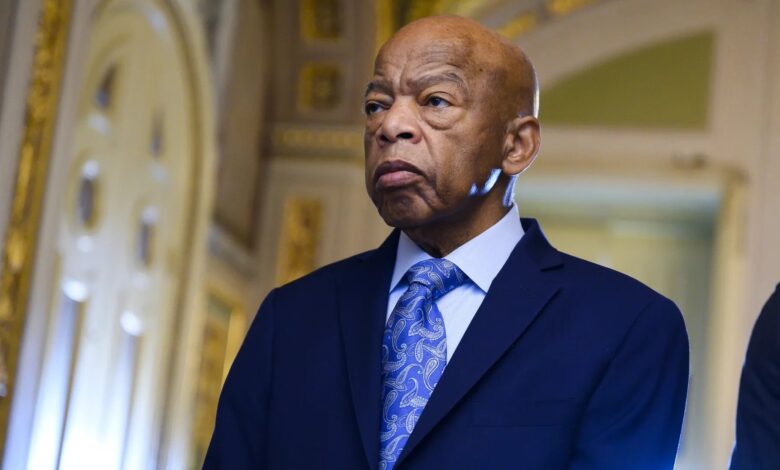The Significance of the John Lewis Act

The House has passed the John Lewis Voting Rights Advancement Act, named after the late Georgia Congressman and civil rights leader John Lewis. It aims to restore the civil rights-era Voting Rights Act, gutted by Supreme Court rulings in 2013 and 2021.
The bill would modernize voter registration, protect against discriminatory purges and ban partisan gerrymandering. It also requires states to disclose their major donors and strengthens campaign finance laws.
Voting Rights
The John Lewis Act would restore critical provisions of the Voting Rights Act that the Supreme Court has eroded. Expressly, the bill would prohibit state laws and procedural changes that make it harder to vote from taking effect without a Justice Department preclearance. This provision would flatly (and retroactively) prevent many of the state Republican-enacted voter-suppression laws that popped up after the 2020 election and would keep future states from implementing such measures as cutting back the number of polling places, requiring photo identification or imposing new voting restrictions on citizens.
The bill would permit federal authorities to require states or localities with a history of discrimination to submit election procedure changes to the Justice Department for review and approval before implementation. The bill creates a formula to determine which jurisdictions are subject to this requirement, replacing the obsolete formula that the Supreme Court discarded in its 2013 decision in Shelby County v. Holder and this year’s decision in Brnovich v. DNC.
These bills and the For the People Act will establish national election standards, guaranteeing equal voting opportunities for all citizens and a democracy that truly represents the people. Congress must pass these two measures and send them to the president for his signature so that our democracy can move forward and continue to protect all Americans’ right to vote.
Voter Registration
Voter registration is the foundation of democracy, and a vital part of it is ensuring that all Americans can access their polling place. In the past, state laws and practices created barriers to voting, such as fees, literacy or comprehension tests, and restrictive photo ID requirements that disproportionately targeted communities of color. The John Lewis Act would ensure that no one is denied their constitutional right to vote because of where they live.
In addition, the bill creates new national minimum standards to guarantee a full and fair election. This includes ensuring that all states offer two weeks of early voting and the ability to vote on nights and weekends. It also protects against attempts to impose strict voter ID requirements and establishes Election Day as a federal holiday.
The John Lewis Act also restores and strengthens the Voting Rights Act. It creates a new formula to restore the preclearance requirement that the Supreme Court struck down.
Voting by Mail
Voting by mail is a popular and accessible way to vote, but it is under attack from some states. The Lewis bill would safeguard mail-in voting while preventing fraud. The legislation also makes it easier for people to apply to receive absentee ballots.
The bill updates the Voting Rights Act in response to a Supreme Court ruling that weakened federal oversight of states with a history of discriminating against minority voters. It would restore and update the formula to determine which states must get preclearance, ensuring that federal oversight of voting laws remains relevant. It also protects the right to vote by requiring that states provide at least two weeks of early voting and that counties count all provisional ballots.
The legislation would make it easier to sue over voting rights violations, a crucial change. The law would establish procedural rules for private citizens or the federal government to challenge new state voting laws if they can prove that they have the effect of diluting minority votes. It also creates a legal standard that allows Section 2 of the Voting Rights Act to be used again, which establishes the legal grounds for the federal government to take action against a state or political subdivision for a discriminatory law based on a significant disparity in its impact on a particular group of voters.
Election Administration
The John Lewis Act seeks to protect voters from the encroaching efforts of states to limit access to the ballot box. It updates and strengthens a vital section of the 1965 Voting Rights Act by bringing back and updating the Justice Department’s authority to preclear or approve election law changes in states with histories of discrimination against minority voters. It also addresses modern discrimination tactics like poll closures, voter ID laws, and partisan gerrymandering by requiring states to submit any new policies to the Justice Department for review.
In addition to the voting rights elements of the bill, it also includes reforms addressing campaign finance.
In 1970 Congress recognized the need to continue these provisions of the Voting Rights Act and extended them for five years. It also rewrote the coverage formula in Section 5 of the Act to reflect the existence of tests or devices and levels of electoral participation as of November 1968. It added a second prong requiring states not covered under the original formula to file a lawsuit showing that they have not engaged in a pattern or practice of discrimination.



